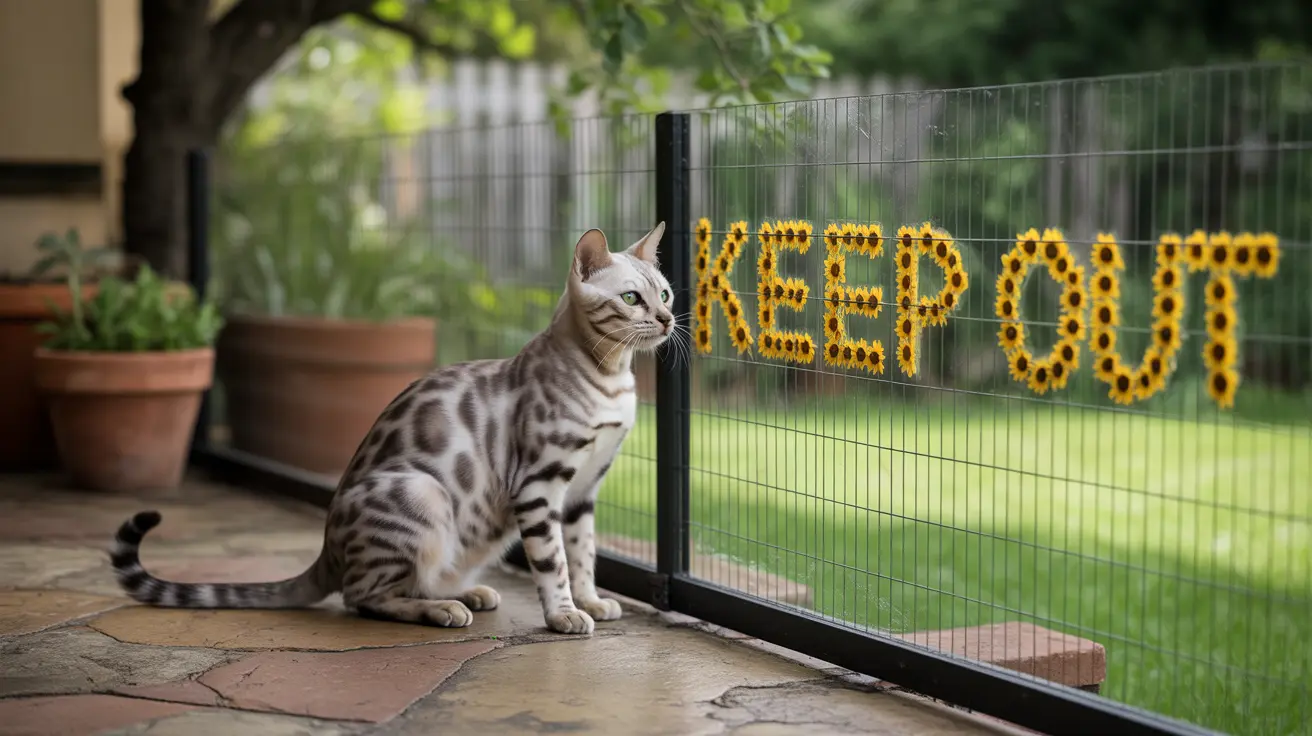Understanding Anti Cat Fence Options
There are several effective methods to create a cat-proof barrier around your yard. The most popular options include:
Netting Extensions
Netting systems attach to your existing fence at a 45-degree angle, preventing cats from climbing over. These systems typically require a base fence height of at least 6 feet for optimal effectiveness. UV-resistant polypropylene netting is the preferred material, offering durability and weather resistance while remaining virtually invisible from a distance.
Roller Systems
Innovative roller-based solutions mount on fence tops, creating a rotating barrier that prevents cats from gaining the grip needed to climb over. These systems are particularly effective and require minimal maintenance, though they tend to be more expensive than netting options.
Installation Requirements and Considerations
Fence Height and Structure
A successful anti cat fence system starts with a sturdy base fence at least 6 feet tall. The additional cat-proofing components typically add another 2-3 feet of protective height. Ensure your existing fence can support the added weight and wind resistance of the system you choose.
Materials and Hardware
Quality materials are essential for long-term effectiveness:
- UV-resistant netting or mesh
- Galvanized brackets and supports
- Weather-resistant mounting hardware
- Gate modification components
Maintenance and Longevity
Proper maintenance ensures your anti cat fence system remains effective for years to come. Regular inspections should check for:
- Loose or damaged netting
- Rust on metal components
- Secure bracket attachments
- Proper tension in all areas
- Clear zones free from climbing aids
Safety and Effectiveness Tips
To maximize the security of your anti cat fence system:
- Remove potential launching points near the fence
- Maintain consistent height around the entire perimeter
- Address corner sections with extra attention
- Ensure gates maintain the same security level
- Consider additional enrichment within the enclosed space
Frequently Asked Questions
How do anti-cat fence systems like netting extensions and roller paddles prevent cats from escaping my yard?
Anti-cat fence systems work by creating an impassable barrier at the top of your existing fence. Netting extensions angle inward at 45 degrees, while roller paddles spin when touched, preventing cats from getting the grip needed to climb over. Both systems effectively block traditional escape routes.
What materials and fence heights are best for installing an effective cat-proof fence?
The best results come from base fences at least 6 feet tall, combined with UV-resistant polypropylene netting or metal rollers. Additional components should be weather-resistant and properly galvanized to prevent rust and deterioration.
Can I install a DIY cat-proof fence myself, and what tools and steps are involved?
DIY installation is possible with basic tools like a drill, level, and screwdrivers. The process involves mounting brackets, securing netting or rollers, and ensuring proper tension throughout. However, professional installation may be preferable for complex layouts or tall fences.
How do I maintain and extend the lifespan of my cat-proof fence system to keep it secure over time?
Regular maintenance includes checking for damage, ensuring proper tension, cleaning debris, and addressing any rust or wear. UV-protected materials can last 10+ years with proper care and periodic adjustments.
What are the pros and cons of commercial cat fence kits versus building a stand-alone enclosure (catio) for my cat?
Commercial kits offer easier installation and proven effectiveness but can be costly. Catios provide complete security and customization options but require more space and construction effort. The best choice depends on your yard layout, budget, and specific needs.
Investing in an anti cat fence system provides peace of mind while allowing your cats to enjoy outdoor freedom safely. Whether you choose a commercial solution or DIY approach, proper installation and maintenance will ensure years of effective containment for your feline friends.






